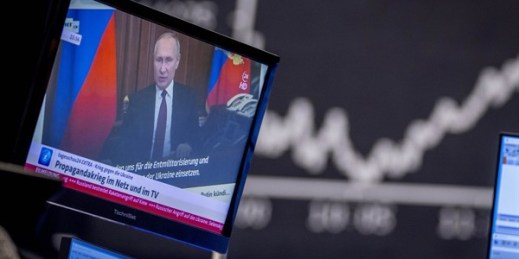
To say that the world is closer to the brink of nuclear war today than at any time since the Cuban Missile Crisis of 1962 feels less controversial by the day. United Nations Secretary-General Antonio Guterres recently told media representatives that the “prospect of nuclear conflict, once unthinkable, is now back within the realm of possibility.” Certainly, Russian President Vladimir Putin has been signaling a willingness to at least consider the nuclear option. In late February, he raised the readiness level of Russia’s nuclear response force, stating that Western interference in the ongoing war in Ukraine will result in “consequences greater than any you have faced […]

